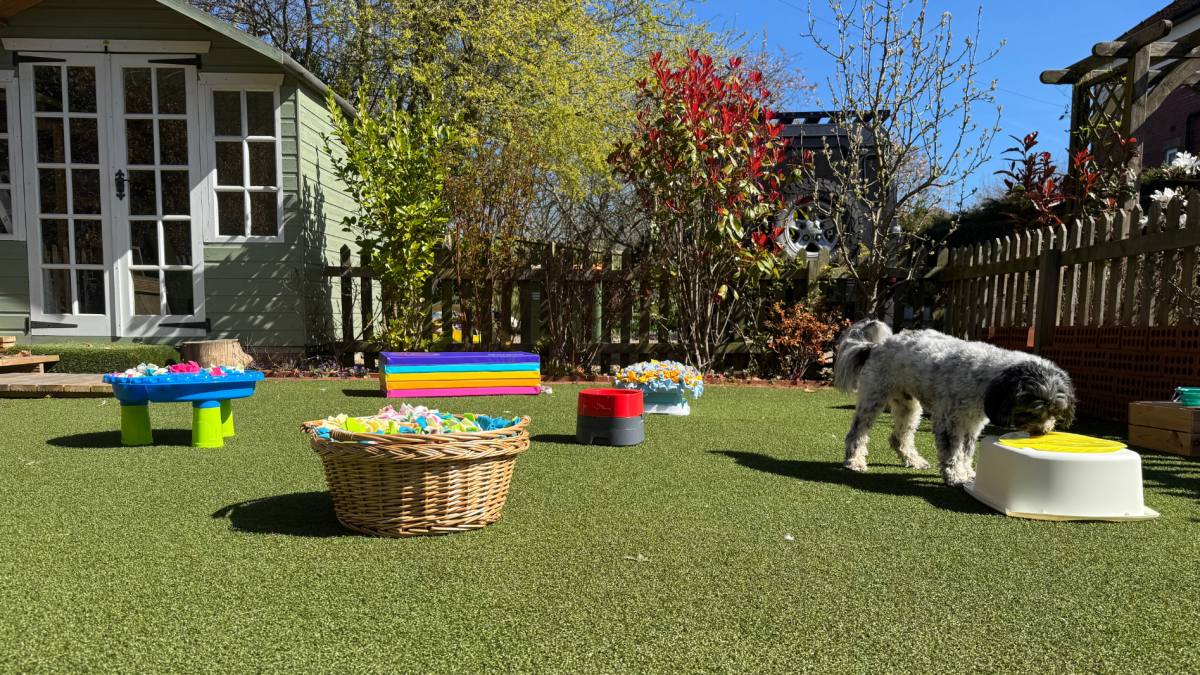How ACE Free Work Helps Anxious and Fearful Dogs Recover, Regulate, and Reconnect

ACE Free Work offers a restorative space, a sensory-rich, emotionally safe environment that helps dogs return to balance, process the world around them, and build confidence at their own pace.
.
When we think about supporting sensitive or overwhelmed dogs, the first words that often come to mind are management, desensitisation, or behaviour change. But beneath every behaviour is a nervous system trying to make sense of the world and that nervous system needs somewhere safe to land. Somewhere to pause, explore, regulate, and recover. This is where ACE Free Work becomes more than an activity, it becomes a restorative space.
.
What Is a Restorative Space?
A restorative space is not just a physical setup. It’s an experience. It’s the emotional tone and structure of the environment that enables a dog to:
- Regulate their internal state
- Engage their senses in ways that feel good
- Make choices without pressure or expectation (NATO)
- Return to their guardian for quiet connection, without needing to 'do' anything.
It’s the opposite of a performance space. No prompts, no corrections, no social pressure. Just space to feel, explore, and return to balance.
In ACE Free Work, we create this environment intentionally, by offering a rich variety of stations and possibilities, and by remaining quietly present without directing the dog’s behaviour. It’s through this combination of safety, choice, and sensory input that regulation can begin to happen.
.
Why Restoration Matter
When a dog is anxious, fearful, or shut down, their nervous system is not in a place to learn or connect. Their behaviour is shaped by survival responses, flight, freeze, appeasement, vigilance. The more these systems are activated, the harder it is to engage with the world in flexible, confident ways.
Free Work creates space to pause.
A space to transition from heightened arousal into calmer states.
To process sensory information without being bombarded.
To move their body in ways that release tension and support proprioception.
To sniff, observe, feel, and choose, without fear of being rushed, interrupted, or corrected.
This is why I describe it as restorative, because it helps the nervous system return to baseline, enabling learning, curiosity, and confidence to re-emerge.
.
The Science Beneath the Surface
From a behavioural and neurological perspective, Free Work supports what’s known as self-regulation, the process by which the nervous system manages arousal, emotion, and attention. The freedom to explore without demand helps reduce sympathetic arousal (the fight/flight part of the autonomic nervous system) and supports activation of the ventral vagal system, which promotes calm engagement and social connection (Porges, 2004).
When dogs are able to shift from hypervigilance to calm exploration, we often see:
- Softer body language
- More fluid movement
- Increased exploration
- Seeking proximity or contact with the guardian
- Signs of decompression
These are not just signs of comfort, they are signs that the dog is beginning to feel safe enough to process the world around them, rather than simply react to it.
.
Restorative Space vs. Secure Base
In attachment theory, a secure base refers to the relationship that provides emotional safety and confidence to explore. For many dogs, that base is their guardian.
ACE Free Work adds a second layer: the environment itself becomes a restorative space, a physical and emotional environment that supports regulation, decompression, and recovery.
Together, the emotionally supportive relationship between guardian and dog, and the restorative qualities of the environment, work in parallel to support wellbeing and regulation.
.
Real-Life Application
You might use Free Work as a restorative space:
- After a difficult vet visit
- Following a difficult encounter on a walk
- As a regular decompression activity to support long-term emotional health
Each session doesn’t need to be long or complex. What matters most is how the environment feels to the dog. Are they free to move, pause, or walk away? Are they receiving calm, consistent signals that nothing is being asked of them and that they are free to experience the space in their own way? If so, the environment becomes restorative.
.
What This Means Going Forward
When we offer ACE Free Work not just as enrichment, but as a restorative space, we create a deeper layer of support. We stop asking “How can I get my dog to behave differently?” and start asking “How can I help my dog feel safer, more grounded, and more able to engage?”
It’s a subtle shift, but it can transform how we support emotional recovery.
Behaviour change is built on emotional safety. Confidence grows through regulation. And healing begins when choice is available.
Free Work, when offered as a restorative space, supports all of this and more.
.
Want to explore this further? The Confident Canine Hub offers in-depth resources and guided support to help you introduce ACE Free Work in a way that supports your dog’s emotional recovery, regulation, and resilience.
 Sonia Catherall
Sonia Catherall 